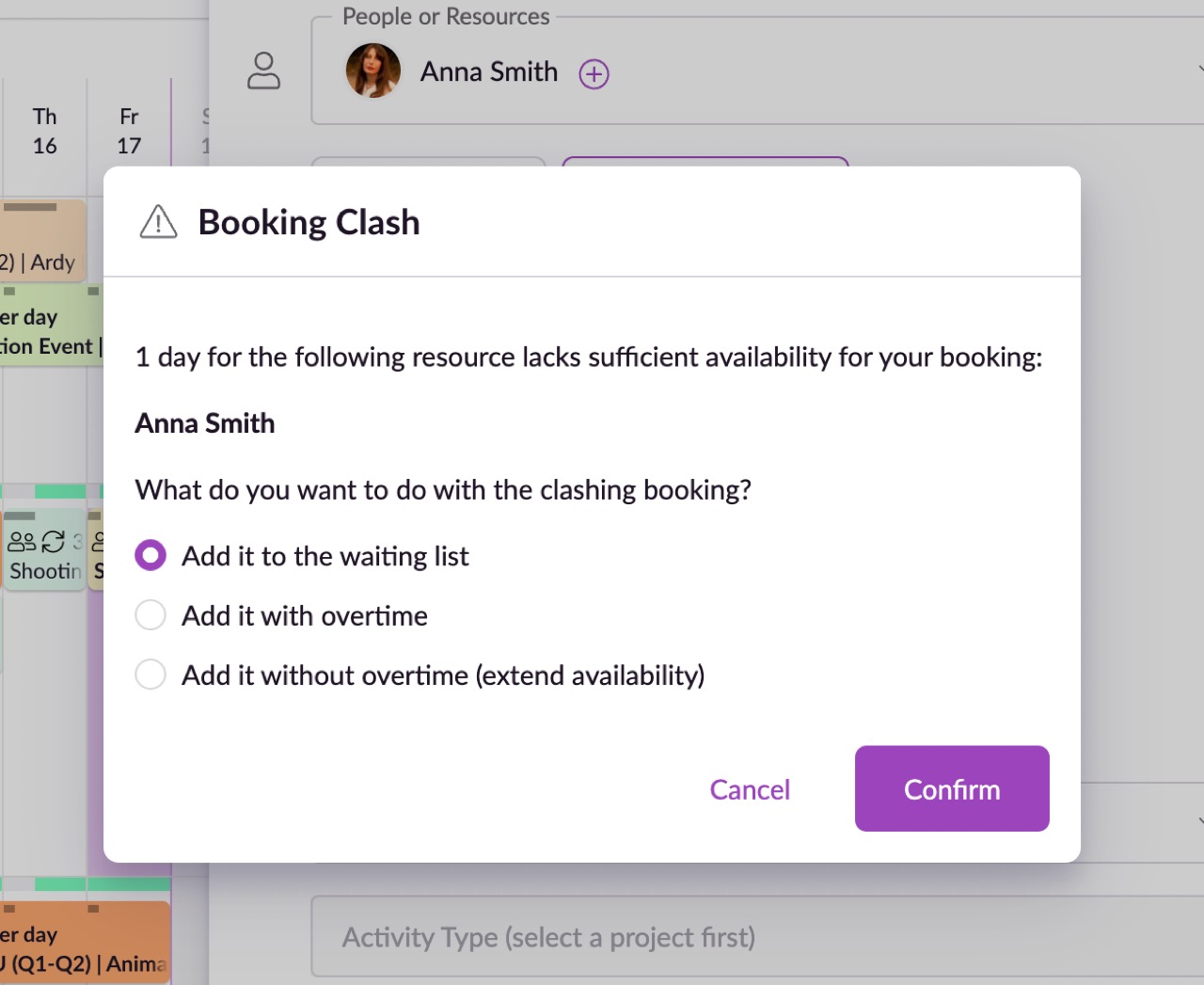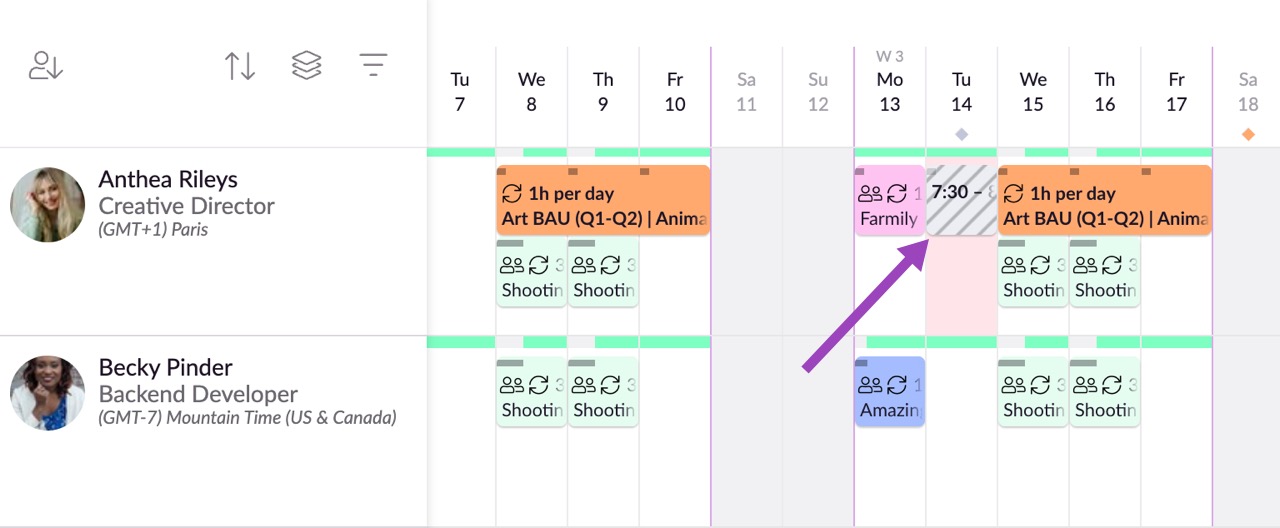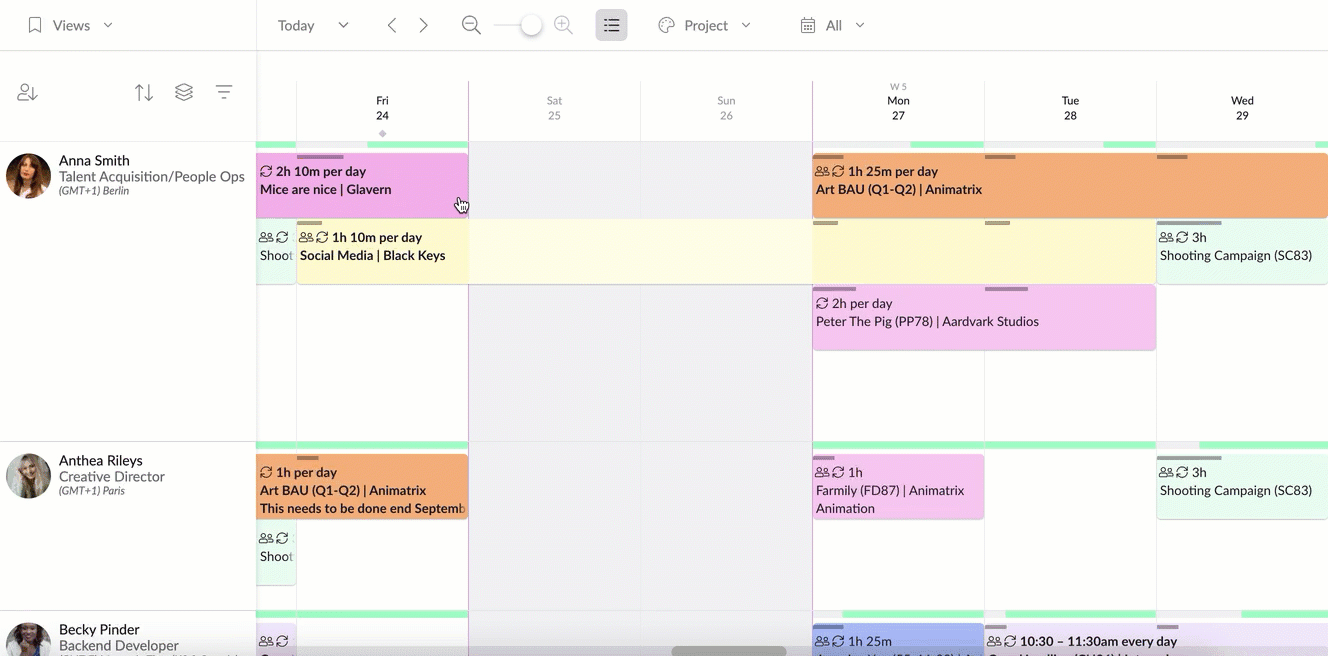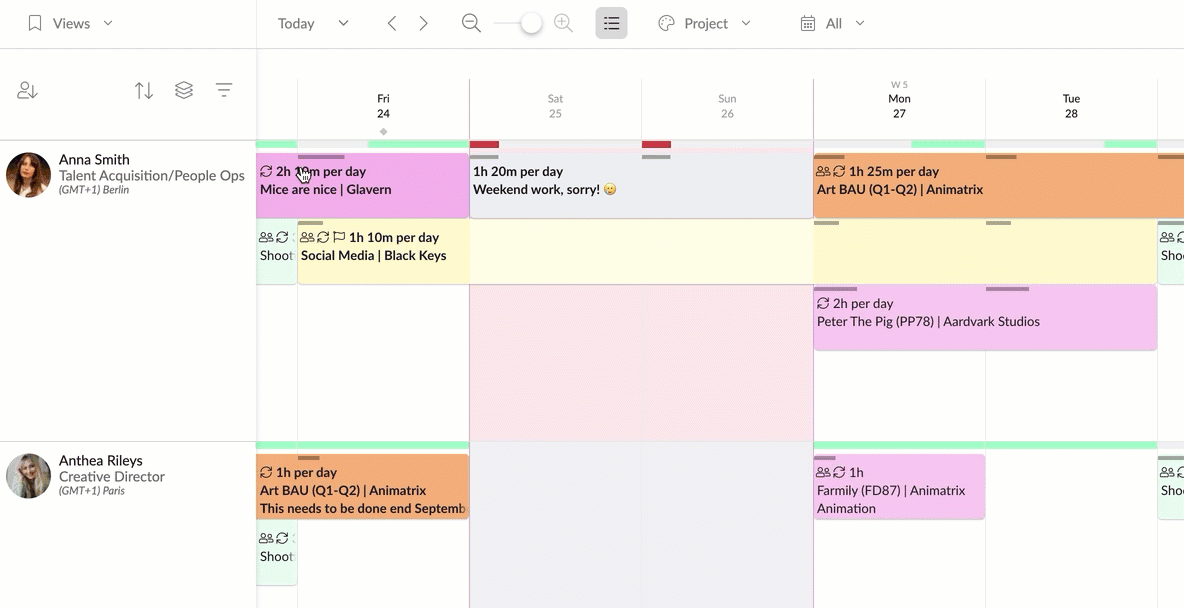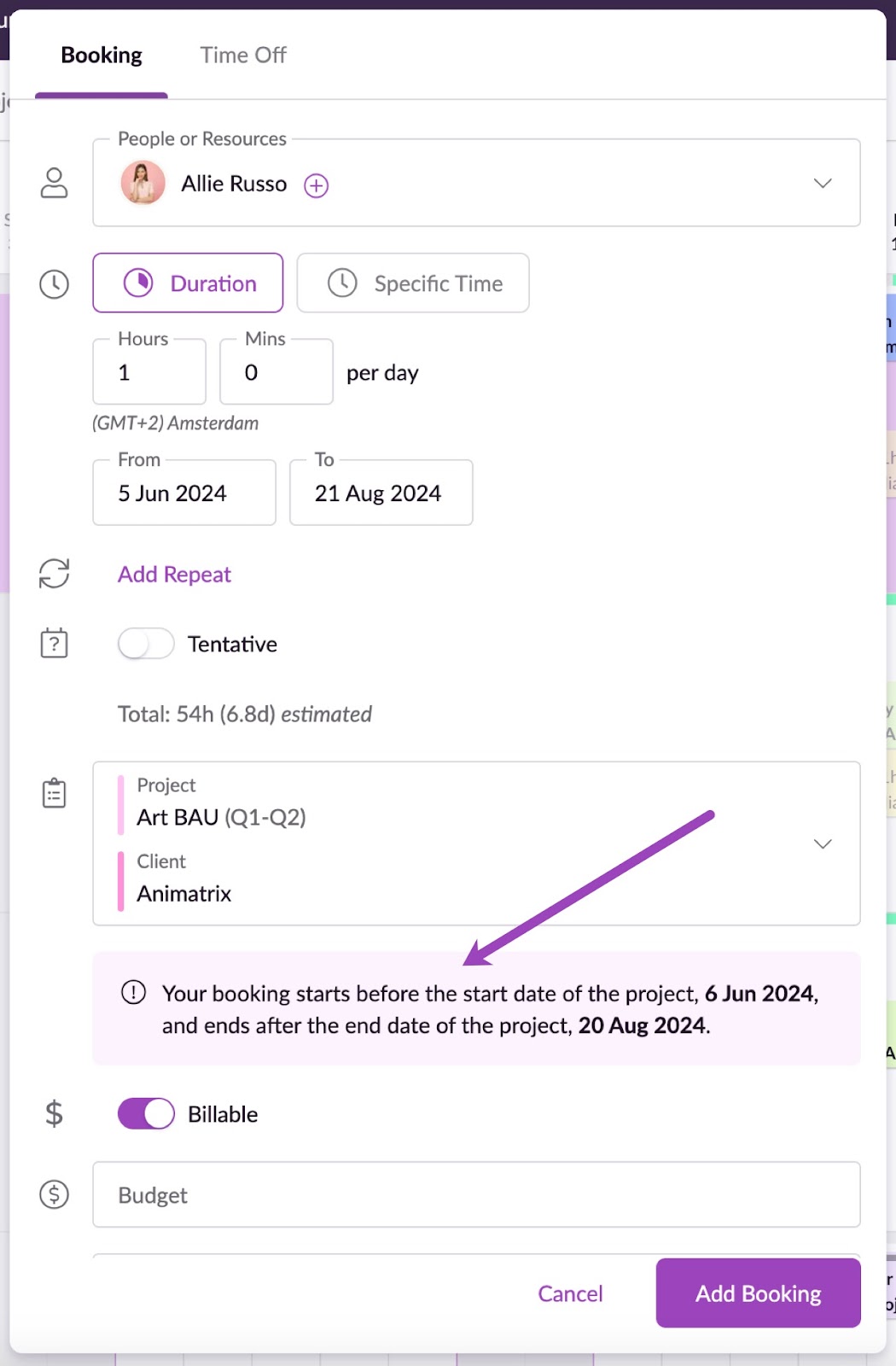Manage Booking Clashes with Waiting List, Overtime and more
Resource Guru features a clash management engine that prevents overbookings. This can be very useful for capacity planning and helps to identify overloaded resources when demand outstrips availability.
If a resource does not have sufficient availability for the booking you’re trying to make, you'll see a Booking Clash with three options:
Add to Waiting List
Add With Overtime,
Add without overtime (extend availability).
The Waiting List
Bookings on the Waiting List are unconfirmed bookings. This means that the resource in question doesn’t currently have enough availability to accommodate the booking. So, the booking either needs to move to another date, another resource or it needs to be reduced to a point where it fits within the availability.
Bookings on the Waiting List are easy to spot—you’ll see diagonal lines on the booking itself and a red background to indicate that they are unconfirmed bookings that need to be resolved.
Your own Waiting List bookings will also appear on your Dashboard as a reminder that you need to resolve them. These bookings won’t appear on the Dashboard of the person you’re trying to book.
The Waiting List is a great way to plan work even when there’s not enough availability and identify availability problems well ahead of time.
Elastic Overtime
Add With Overtime automatically extends a resource’s availability and flags the extra hours as overtime.
You can usually identify overtime by a red bar that appears on the Availability Bar along with a red background on the date. You can view overtime details by hovering over or clicking on the Availability Bar.
Any availability which is added automatically is elastic, meaning that it is ✨ automagically ✨ removed if time becomes available again. For example, by deleting or moving a booking.
Overtime can also be added or removed manually by dragging the slider in the popover on the Availability Bar. Please note that only booked time can be flagged as overtime.
All overtime appears in the Reports, allowing you to keep track of who’s overloaded and where you have insufficient resources. Tracking overtime in this way helps you maintain a healthy, happy workplace 🙂
Extending Availability (Add Without Overtime)
The Add it without overtime (extend availability) option allows you to extend a resource’s availability without marking it as overtime. When you select this option, their availability is adjusted to accommodate the booking.
This functionality is particularly useful for situations where a resource is available but their current availability needs a slight extension to fit the booking. The Availability Bar will display the updated total hours for the day, with the extended hours marked as elastic overtime. These adjustments won’t be flagged as overtime in reports.
Capacity Planning
You can use the Waiting List and overtime for capacity planning by identifying areas where demand outstrips availability.
Simply visit Reports and sort the resource list by the Waiting List or Overtime column. With this enhanced visibility, you can identify areas where you need to take corrective action, i.e., by hiring freelancers or adjusting project schedules to match resource availability. Use Filters to do capacity planning for specific groups of resources.
Adding Bookings on Weekends or Other Non-working Days
There are times when working on a weekend is simply unavoidable. Plans sometimes go haywire and deadlines need to be met. So, we’ve made it easy to allocate work to people on non-working days.
When you add the booking, you will see options to either add the booking to the Waiting List, add it with overtime or to extend their availability.
If work added on a weekend is not considered to be overtime, you can simply remove it with the slider. In the example above, this means that Anna has 1 hour and 20 minutes scheduled for Saturday, and her availability for that day will be updated accordingly to reflect this time.
If you create a booking which starts or ends on a non-working day and spans multiple non-working days, bookings on all of the non-working days will be added with overtime or to the Waiting list, depending on the option you choose.
Guru tip
You will see a Booking Clash warning if you attempt to make a time-specific booking (e.g. 9 am–3 pm) that spans a resource’s break—for example “Lunch from 1–2 pm.” To prevent this, either adjust the booking to avoid the break times or make a duration booking instead (e.g., 6h).
Creating Bookings Outside of a Project Start or End Date
When you create a booking either before the start date or after the end date of the assigned project, a Booking Clash warning will appear. This warning informs you that confirming the booking will update the project's start or end date accordingly.
If you have sufficient permissions, you can confirm the booking and the project’s start and end dates will be updated automatically.

